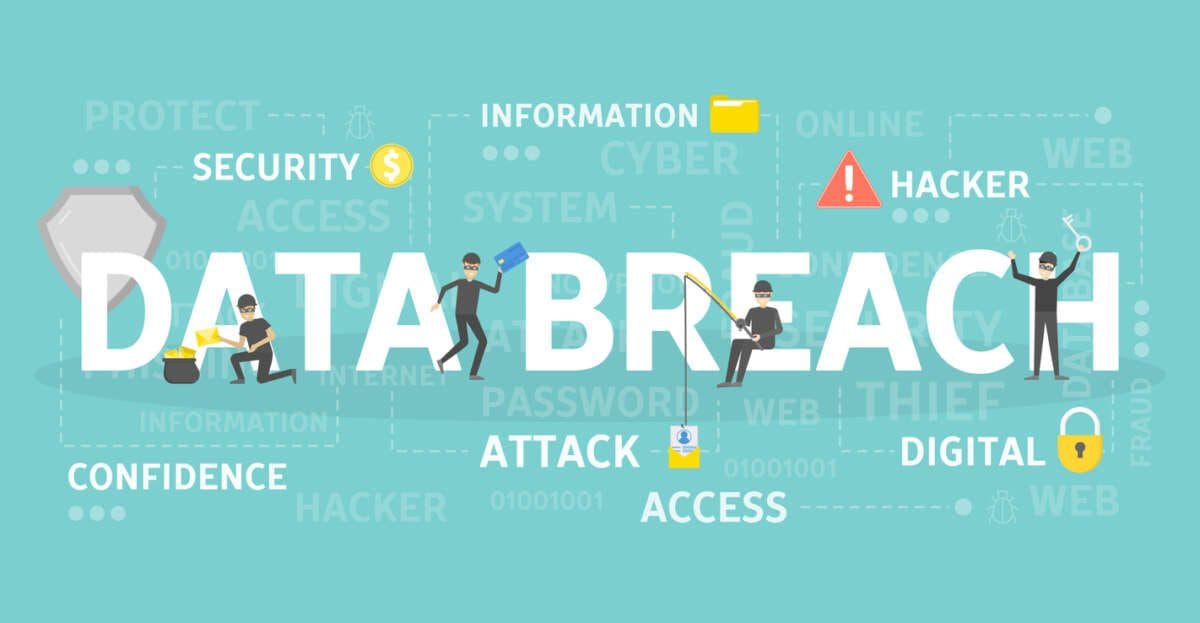
How to Prevent Data Breaches
In the digital age, data has become a precious asset for individuals and businesses alike. However, the increasing reliance on technology and data has led to a surge in data breaches. These incidents can result in financial losses, damage to reputation, and legal repercussions. This comprehensive guide aims to provide insights into preventing data breaches, enhancing cybersecurity measures, and safeguarding sensitive information.
Understanding the significance of data security:
Data security is the practice of safeguarding data from unauthorized access, modification, or destruction. It ensures that sensitive information remains confidential, integral, and accessible only to authorized individuals or systems. Recognizing the importance of data security is crucial for building trust with customers, partners, and stakeholders.
The growing threat landscape of data breaches:
The threat landscape for data breaches is continually evolving, with cybercriminals becoming more sophisticated and targeting organizations of all sizes and industries. Understanding the current threat landscape is vital for implementing appropriate preventive measures.
Importance of implementing preventive measures:
Preventing data breaches is more effective and less costly than dealing with the aftermath of a breach. Implementing proactive cybersecurity measures helps organizations stay ahead of potential threats and protect their critical assets.
Assessing vulnerabilities:
Before devising a data breach prevention strategy, it’s essential to identify and understand vulnerabilities within the organization’s infrastructure and processes.
Conducting a thorough security risk assessment:
A security risk assessment evaluates potential risks, threats, and vulnerabilities faced by an organization. It involves analyzing the entire IT landscape, including hardware, software, network, and personnel.
Identifying critical data and vulnerable entry points:
Understanding what data is critical to the organization and where it is stored allows for targeted protection. Additionally, identifying vulnerable entry points, such as outdated software or weak passwords, helps in fortifying security.
Evaluating internal and external threats:
Data breaches can occur from both internal and external sources. It’s essential to assess the risks posed by employees, contractors, or vendors, as well as external threat actors, to establish appropriate controls.
Implementing strong access controls:
Controlling access to sensitive data is a fundamental pillar of data breach prevention.
Utilizing multi-factor authentication (MFA):
MFA adds an extra layer of security by requiring users to provide multiple forms of identification before accessing sensitive information. This can include something they know (password), something they have (smartphone), and something they are (biometrics).
Role-based access and privilege management:
Assigning access privileges based on job roles ensures that employees can access only the data necessary for their responsibilities. Limiting unnecessary access reduces the attack surface.
Regularly reviewing and revoking access rights:
Frequent reviews of user access rights help identify and address any potential gaps or unauthorized access. Terminated employees’ access should be promptly revoked to prevent misuse.
Robust data encryption:
Encrypting data is a critical safeguard against unauthorized access to sensitive information.
Encrypting data at rest and in transit:
Data at rest (stored data) and data in transit (transmitted data) should both be encrypted using strong cryptographic algorithms to prevent interception and unauthorized viewing.
Leveraging advanced encryption algorithms:
Using industry-standard encryption algorithms ensures that even if data is compromised, it remains unreadable without the decryption key.
Securing endpoints and mobile devices:
Securing endpoints such as computers and mobile devices with encryption, secure boot, and access controls prevents data leakage in case of device theft or loss.
Upgrading network security:
A robust network security infrastructure is crucial to defend against external threats.
Firewalls, intrusion detection systems (ids), and intrusion prevention systems (IPS):
Firewalls act as a barrier between an organization’s internal network and external networks, while IDS and IPS monitor network traffic for potential threats and block malicious activities.
Virtual private networks (VPNs) for secure remote access:
VPNs provide encrypted and secure connections for remote workers, protecting data transmission over public networks.
Network segmentation for isolation of sensitive data:
Segmenting the network into isolated sections limits the spread of a breach and prevents unauthorized lateral movement within the system.
Educating employees on cyber hygiene:
Employees play a crucial role in data breach prevention, and their awareness and knowledge are essential.
Cybersecurity awareness training programs:
Regular training programs on cybersecurity best practices and the latest threats help employees recognize and respond to potential risks.
Recognizing phishing and social engineering tactics:
Training employees to identify phishing emails, suspicious links, and social engineering attempts reduces the likelihood of successful attacks.
Encouraging a security-centric organizational culture:
Fostering a culture where data security is a shared responsibility creates a workforce that actively participates in safeguarding sensitive information.
Regular security audits and penetration testing:
Periodic assessments help identify vulnerabilities before malicious actors can exploit them.
Conducting periodic vulnerability assessments:
Regularly scanning systems and applications for vulnerabilities allows organizations to patch weaknesses promptly.
Engaging third-party penetration testing services:
Ethical hackers perform controlled attacks to identify weaknesses in the organization’s security measures.
Addressing vulnerabilities promptly:
Once vulnerabilities are identified, swift remediation measures should be taken to prevent potential data breaches.
Secure software development practices:
Secure coding practices minimize the risk of data breaches resulting from software vulnerabilities.
Following secure coding standards:
Developers should adhere to industry best practices and coding standards to reduce the likelihood of introducing security flaws.
Regularly patching and updating software:
Keeping software and applications up to date with the latest security patches closes known vulnerabilities.
Performing code reviews and static analysis:
Thorough code reviews and static analysis tools help identify and rectify security weaknesses early in the development process.
Incident response and disaster recovery:
Despite preventive measures, data breaches may still occur. Having a robust incident response and disaster recovery plan is vital to minimize damage.
Developing a comprehensive incident response plan:
The plan should outline clear steps to detect, respond, and contain breaches effectively.
Practicing incident simulation and drills:
Regularly conducting simulated breach scenarios ensures that the response team is well-prepared to handle real incidents.
Creating redundant data backups and recovery procedures:
Maintaining backups of critical data and establishing recovery procedures ensure data availability even in the aftermath of a breach.
Compliance with data protection regulations:
Complying with relevant data protection regulations is not only a legal obligation but also an essential aspect of data breach prevention.
Understanding applicable laws and regulations (e.g., GDPR, CCPA):
Organizations should be aware of the data protection laws that apply to their operations and ensure compliance.
Maintaining compliance with industry standards:
Following industry-specific security standards and frameworks further enhances data protection practices.
Establishing data privacy policies and procedures:
Clear and comprehensive data privacy policies help employees understand their responsibilities and obligations regarding data protection.
Monitoring and analytics:
Continuous monitoring and analytics enable early detection of suspicious activities.
Implementing real-time security monitoring tools:
Real-time monitoring tools provide instant alerts for potential security incidents. These tools continuously analyze network traffic, user behavior, and system logs to identify anomalies indicative of a data breach or cyberattack.
Utilizing security information and event management (SIEM) solutions:
SIEM solutions consolidate and correlate data from various sources to provide a centralized view of security events. This integrated approach helps security teams detect and respond to threats more effectively.
Leveraging AI and machine learning for anomaly detection:
Artificial Intelligence (AI) and Machine Learning (ML) technologies can analyze vast amounts of data and patterns, enabling more accurate anomaly detection and proactive threat hunting.
Regular employee background checks:
Ensuring a trustworthy workforce is crucial for data breach prevention.
Ensuring trustworthy workforce:
Conducting thorough background checks before hiring employees helps identify potential risks associated with malicious intent or previous involvement in data breaches.
Minimizing insider threats:
Educating employees about the consequences of insider threats and fostering a culture of trust and transparency helps reduce the likelihood of internal data breaches.
Maintaining data access audits:
Regularly auditing employee access to sensitive data ensures that only authorized individuals have appropriate privileges, minimizing the risk of data exposure.
Collaborating with cybersecurity experts:
Partnering with cybersecurity experts enhances an organization’s ability to detect and prevent data breaches.
Employing dedicated security teams:
Establishing dedicated cybersecurity teams with the expertise to handle complex threats is essential for maintaining a robust defense posture.
Participating in information sharing forums:
Engaging in information-sharing platforms and collaborating with other organizations in the industry helps identify emerging threats and best practices for data breach prevention.
Engaging external consultants for expert advice:
Hiring external cybersecurity consultants allows organizations to gain unbiased insights and recommendations to bolster their security strategies.
Continuous improvement and adaptation:
Data breach prevention is an ongoing process that requires constant vigilance and adaptation.
Staying updated with latest cybersecurity trends:
Keeping abreast of the latest cybersecurity trends, threat intelligence, and attack techniques enables organizations to proactively address emerging risks.
Learning from past breaches and implementing remediation measures:
Analyzing past data breaches and learning from them helps organizations identify weaknesses and implement effective remediation measures.
Fostering a proactive security approach:
A proactive security approach focuses on anticipating and preventing threats rather than reacting to incidents after they occur.
Safeguarding data from data breaches:
Safeguarding data from data breaches is of paramount importance in today’s interconnected world. Implementing a comprehensive data breach prevention strategy involves a multi-layered approach that includes assessing vulnerabilities, implementing access controls, encrypting data, and educating employees. Additionally, organizations must stay compliant with data protection regulations, monitor their systems for anomalies, and continuously improve their security practices. By fostering a security-conscious culture and collaborating with cybersecurity experts, organizations can build robust defense mechanisms to protect their valuable data from cyber threats.
Encouraging a security-conscious mindset across organizations:
A data breach prevention strategy is only effective when every individual in the organization actively participates in safeguarding data. Encouraging a security-conscious mindset at all levels creates a strong line of defense against potential breaches.
Emphasizing the role of every individual in safeguarding data:
Each employee, from the entry-level staff to top executives, has a responsibility to prioritize data security. Encouraging accountability and promoting a shared sense of ownership over data protection significantly strengthens the organization’s overall security posture.
In conclusion, preventing data breaches requires a proactive and multi-layered approach to cybersecurity. By understanding the significance of data security, assessing vulnerabilities, implementing strong access controls, encrypting data, and staying compliant with regulations, organizations can significantly reduce the risk of data breaches. Educating employees, conducting regular security audits, and collaborating with cybersecurity experts are equally important aspects of a comprehensive data breach prevention strategy. Emphasizing continuous improvement and fostering a security-conscious culture will ultimately create a resilient defense against the ever-evolving threat landscape. Safeguarding data is not an option but a necessity to protect the interests of individuals and organizations in an increasingly interconnected world.


